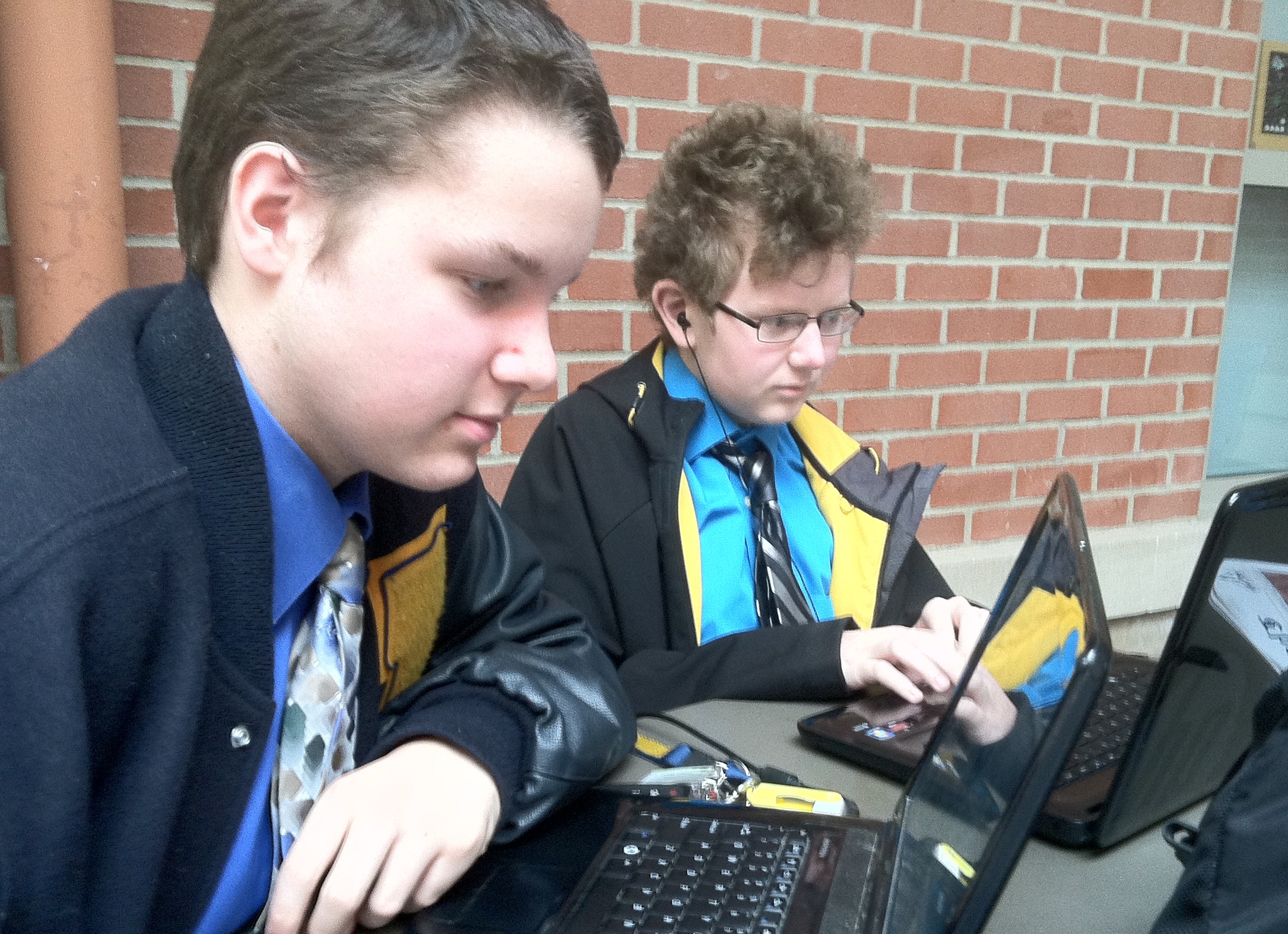by Patrick Millican ‘15
Surveying Rade or the Senior Lounge last year, one could see hundreds of faces mesmerized and illuminated by the glow of their smartphones, then legal on campus. But look out from the same vantage point this year and you’ll see a similar scene–students engaged with technology–but the cellphones have been subrogated by tablets and laptops. The obvious reason for the shift lies in the new BYOT program, but that program’s origins and the accompanying changes in cellphone rules, are not as well-known to students.
While many Ignatians see the BYOT as the brainchild of Principal Bradesca, its progenitor is in fact the Board of Regents, who decided five years ago to investigate and implement a one-to-one BYOT program on Saint Ignatius’s campus. (“One-to-one,” in this context, refers to a program whereby each student possesses his own private piece of technology, as opposed to school property shared by students, as was the case in years past with Mr. Hess’s iPads or the Theology Department’s Chromebooks.) The dual purposes of the program were, first and foremost, to promote digital citizenship and literacy, and, secondarily, to prepare students for college and the constant use of technology there.
First came the research into the Ignatius student body: According to Bradesca, “We discovered that most students already had items of technology at home that they were already familiar with. Why make a student with a laptop go and buy an iPad?” Then, in the course of researching other schools that have implemented programs similar to ours, especially Brebeuf Jesuit in Indianapolis, the Administration came to the conclusion that certain steps needed to be taken to ensure that implementation of the program went smoothly.
For example, each teacher was given an iPad two years ago, in addition to the laptop he or she already had, in order to become acquainted with the relevant software and hardware that students would be utilizing alongside teachers in classrooms. Secondly, over the past five years the bandwidth of the school’s wifi has grown to comply with the eventual stress placed upon it by 1500-odd laptops and tablets.
Since the program officially began in August, Principal Bradesca is proud to report that the reaction from many students and faculty has been overwhelmingly positive. “In fact,” he said, “one student lost his BYOT-enabled iPad on campus, and it was eventually located by using the wifi signal to figure out which router it was accessing and thereby determine where on campus it was.” And, in spite of many fears voiced by students who professed discomfort with leaving their backpacks unattended with their mandatory piece of technology for fear of it being stolen, Principal Bradesca can confidently say that, as of writing, there have been no thefts of BYOT devices thus far this year.
But where does that leave cellphones? Doesn’t the ubiquity of laptops and iPads obviate cellphones? After all, they can perform all the same functions, except calling, which has never been allowed on campus. That kind of thinking is shared by Principal Bradesca, who says that the new cellphone policy is the result of the obsolescence of smartphone technology with the advent of the BYOT. (The new cellphone regulation, in Principal Bradesca’s own words, is that “Smartphones are not permitted for use during the school day,” in case anyone wasn’t entirely certain what it was.) The cause, therefore, was not in fact complaints from too many teachers that students were using their phones in class, but rather that cellphones simply present too much potential for abuse when other avenues of technological interaction are available for classroom use.
But, as with any new policy, from the get-go it hasn’t been universally followed. Still, Principal Bradesca says, “I see students walking across campus with their phones.” He isn’t a proponent of siccing the “cellphone police” (as he terms rigorous and predatory enforcement of the cellphone policy) on students because “that’s not realistic,” and he does plan on allowing an initial grace period. That is not, however, to be taken advantage of or to become an excuse for habitually flouting the rules, since he plans on a gradual ramp-up of enforcement that could eventually include “confiscation and JUGs” if students don’t comport themselves accordingly.
Though it may take some time for compliance to be universal, given how well the school has responded to the BYOT and the cellphone policy, eventually, Principal Bradesca believes, “everyone will get the message.”






